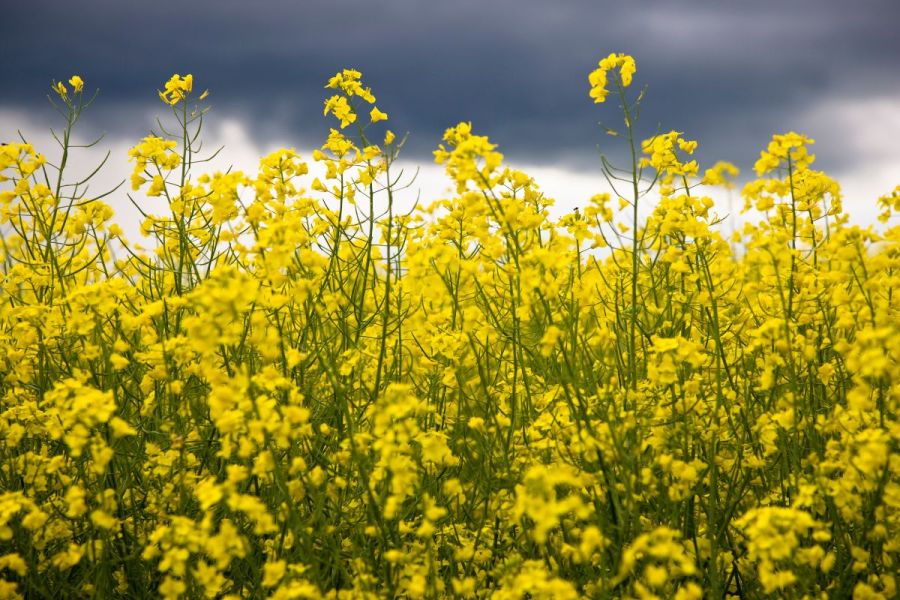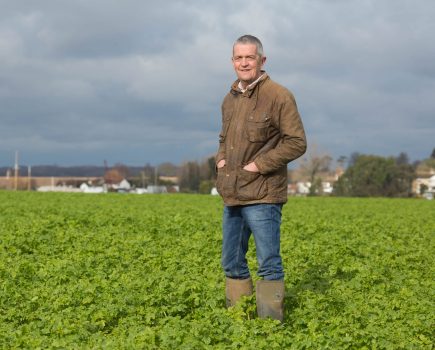By Martin Lines
The past few weeks we’ve been going over and over our crop rotation for the year ahead. When we’re doing the budget for some of our break crops, they can look challenging in making a return on investment. Especially in growing crops like oilseed rape when the majority of our investment is committed before Christmas and before knowing if we’re going to have a crop that’ll last until harvest.
Do we go cheap and cheerful, adding a companion crop so that if the OSR fails it’ll count as a catch or cover crop and hopefully gain some Sustainable Farming Incentive (SFI) money?
We’ve had several conversations with our agronomist to gather feedback on problems they’ve seen over the past year. Fields where we’ve seen poor blackgrass control this season will have to go into a spring crop or be late drilled, depending on how bad it is.
After we sort a final plan for what we think we have to do in each field, we can look at the varieties that’ve done well. The past few seasons it’s been helpful to view early results on industry trials to see if we should look at new varieties, or if they’ve picked up disease pressure issues that we might not have seen on our farm.
If we can, we home-save any variety that’s done well and then look at what else we require. In the past few seasons we moved away from seed dressing treatments as we’ve seen better results for germination and yield without them.
For any crop saved for seed, we always test it for disease before planting – anything with a disease level that we’re concerned about won’t be used. Asking merchants what their disease testing results are when ordering seed has proved challenging. If a seed crop is clean, why would we want to add a seed treatment (and cost) to prevent the disease?
We’re focusing on getting the biology working in the soil so as soon as the seed germinates, it connects with the soil and starts feeding on the nutrition. I always find it satisfying to dig out the newly germinated seed to see how the roots have connected and are holding onto the soil. If there’s time and opportunity, we’ll plant a catch crop after harvest and before sowing the following year’s autumn planted crop.
We try to keep living roots in the soil for as long as possible, which seems to help keep the biology and bacteria alive. Any ground going into spring crops will always get an over-winter cover crop.
Hopefully, by the time you read this, Defra will have started rolling out applications for the new SFI 2023 options. Not everybody will want to do everything, but there are several things you can apply for to get some easy income without having to change what you do. Some options mean doing things differently, particularly moving away from working from the edge of the field.
The actions in SFI and Countryside Stewardship (CS) should be seen as the government’s way of offering the sector help in delivering a working farmed landscape while protecting and enhancing our environment.
Regulation in enforcement is coming our way and we must do all we can to safely use pesticides, keep pesticide residue out of our watercourses, and adhere to the legal requirements of buffer zones. We’ve seen significant benefits by placing grass and flower margins across our farm to protect watercourses and deliver habitat for pollinators and predatory insects that can manage our pests.
I know many farmers have had bad experiences with stewardship and the Rural Payments Agency (RPA) in the past, myself included. RPA is no longer inspecting like they used to; instead, they now support visits. If you’ve made minor errors in a scheme or option, you’ll have time to improve. If you’ve done something obviously wrong, you’ll be asked to fix it as soon as possible and you may lose the payment for that action until it’s fixed. Gone are the days when you lost a percentage of all payments for each mistake ever made.
As an industry, we have a choice to take up the SFI and CS options and demonstrate to HM Treasury, government and the public the value we can deliver, and help ensure sufficient and appropriate reward for the actions delivered. The bigger the scale of positive change the sector brings, the greater the argument for upscaling the financial incentive to maintain action on farms. If we don’t, the agricultural budget will be reduced in years to come, and the threat of using regulation enforcement instead of rewards becomes stronger.
This article was taken from the latest issue of CPM. For more articles like this, subscribe here.
Sign up for Crop Production Magazine’s FREE e-newsletter here.




